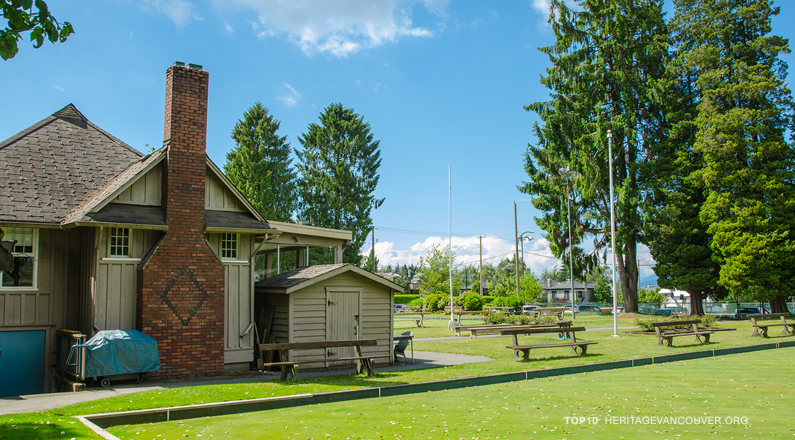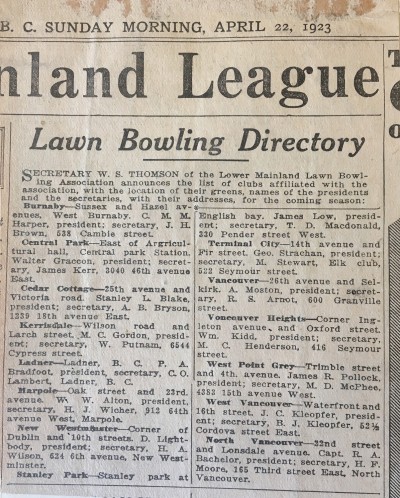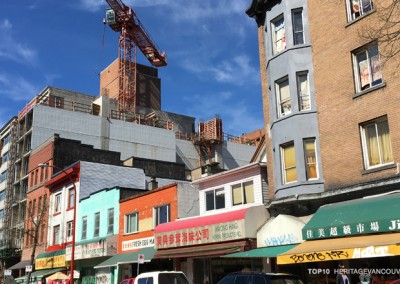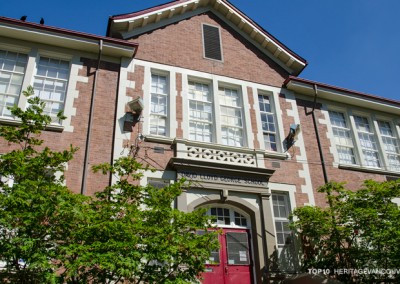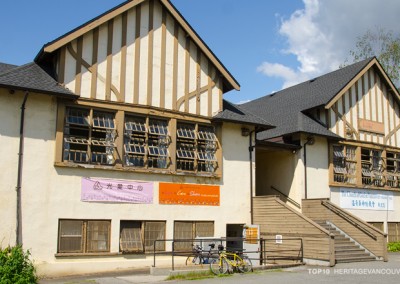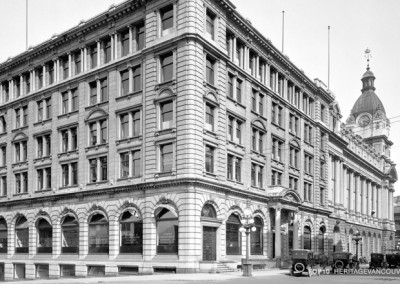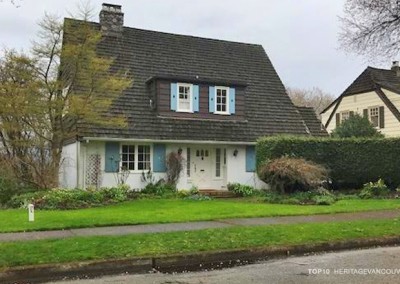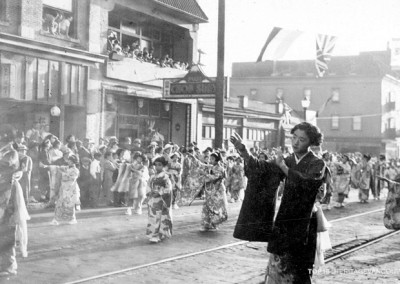Vancouver retains a surprising number of early lawn bowling clubs, some of which have been existence for a century. Lawn bowling has long been a genteel tradition in Vancouver’s recreational sport and social makeup. Many of these clubs were established in the early twentieth century, and several have retained their original and highly-authentic club houses. Their pristine bowling greens are among the most lovingly-tended and perfect patches of grass in the city.
These unique sites speak to Vancouver’s social, cultural and sports history, and provide green community oases and a strong connection to the past. But despite their unique heritage value, only one of the city’s seven identified historic lawn bowling clubs is listed on the Vancouver Heritage Register.
Although none of these sites are specifically threatened, a lack of recognition of both their built and cultural heritage means that these precious and beautifully-maintained sites could face future threats from changing park policies or leases.
Threat
What is the threat to Vancouver’s lawn bowling clubs??
Lack of awareness of Vancouver’s historic cultural resources can be problematic when development or changes occur, along with the lack of official recognition on the Vancouver Heritage Register of both built and cultural heritage community assets.
If membership and bowling activity were to decrease, and clubs were not able to maintain their status, what would happen to their historic clubhouses, greens, and their cultural history, especially with some clubs now hitting their 100-year anniversaries in Vancouver?
Significance
Why are Vancouver’s lawn bowling clubs significant?
Vancouver has always had a lively tradition of social sport and recreation, where healthy athletic competition and numerous sports teams helped define many communities that connected through recreational activity. Throughout the city, lawn bowling was just one of many very popular competitive and recreational activities.
After the city incorporated in 1886, the first amateur sports competition was a rugby match in which Vancouver beat New Westminster. It was held on a cleared but muddy piece of ground on Cambie Street, later named Larwill Park after Alf Larwill who lived there in a shed filled with sports equipment, which he loaned out for rugby, soccer, lacrosse, cricket and baseball games.
The only decent local playing field belonged to George Black, proprietor of the Brighton Hotel at Hastings Townsite; spectators had to walk a mile through the forest from the end of the streetcar line at Powell Street and Victoria Drive to attend the games.
In 1888, many of the most prominent citizens united behind the efforts to establish a proper athletic park in the city, which opened at Brockton Point in 1891. As the city’s population grew, many more playing fields were established, some informal and some official.
Racquet sports and lawn sports became very popular pastimes, and grounds were established for a number of lawn bowling clubs in the early twentieth century.
In the City’s new Heritage Action Plan Historic Context Statement & Thematic Framework (2017), a key defining component within the theme of Society is “Sports & Recreation.” Lawn bowling clubs fit well into this new evaluation framework from a historic, cultural, and sport perspective, but most have so far missed official recognition, except for the Terminal City Club.
Lawn Bowling Sites on the Heritage Register
- Terminal City Lawn Bowling Club, 3025 Fir Street. Lawn Bowling Club House, Thomas Logan Kerr architect, 1934.
Lawn Bowling Sites Recommended for the Heritage Register
- Kerrisdale Bowls Club, Elm Park, 5800 Elm Street, 1917
- Stanley Park Lawn Bowling Club, Beach Avenue, 1919. Lawn Bowling Club House, Percy Underwood architect, 1948-49.
- West Point Grey Lawn Bowling Club, 4376 West 6th Avenue, 1921. Lawn Bowling Club House, A. Campbell Hope architect, 1921; Alterations/additions, 1935.
- Dunbar Lawn Bowling Club, 3850 West 31st Avenue, 1927
- Vancouver South Bowls Club, 4850 St. Catherine’s Street, 1928
- Vancouver Bowling Club, Queen Elizabeth Park, 4600 Cambie Street, 1967
Overview of Club Histories
-
The Vancouver Lawn Bowling Club was formed on November 26, 1912, and by 1914 games were held on Parks Board land at Brockton Point. With increasing interest in lawn bowling, the old Arnold Estate located at 25th and Granville was rented for $100 per year from the CPR in 1915. Play commenced on the tennis courts of the estate and CPR looked after the maintenance; this was the first formal bowling green in Vancouver. Increasing membership and differing opinions necessitated a split in the membership, with the original 1912 group moving to new quarters and retaining the name of the Vancouver Lawn Bowling Club; since 1967 they have been located in Queen Elizabeth Park. The players who remained called themselves the Terminal City Lawn Bowling Club. Both clubs flourished, and both remain in operation today.In 1919, a bowling green was built in the area known as the elk paddock at Stanley Park’s Beach Avenue entrance — the present location of the Stanley Park Lawn Bowling Club. The club officially opened in May 1919 with men bowling in suits, ties and hats. For many years, the club was segregated by sex, and only became integrated in 1986 after a complaint was made to the Park Board. The clubhouse was built 1947-48, and the Club remains in its current location today. This year in 2017, the Stanley Park Lawn Bowling Club celebrates their 100th anniversary.
- The Kerrisdale Bowls Club, situated in Elm Park, was founded in 1915 and has been playing at its current location since 1917.
- The West Point Grey Lawn Bowling Clubhouse was designed by Archibald Campbell Hope, and was one of a pair built in 1921 for the Corporation of Point Grey (building permit no. 3829); the other was located at 702 West 18th Avenue (building permit no. 3828) and has since been demolished. The West Point Grey Bowls Club started on February 15, 1921; the first president was W.G. Armstrong. The Women’s Club opened on June 9 of that same year with Mrs. G.E. Winter as president. One of the high points in the club’s history was when it played host to the Lawn Bowls event in the Commonwealth Games (then called the British Empire Games in 1954).
- The Dunbar Lawn Bowling Club‘s green was seeded in 1926 and the first bowling took place the following year.
- The lots for the Vancouver South Bowls Club in Grays Park were purchased on September 20, 1928.
- The former Grandview Lawn Bowling Association clubhouse and greens in Victoria Park on Salsbury Drive had been undertaken as a Depression-era works project and opened in 1933. Through careful preparation, hard work and community fundraising, the Ladies Auxiliary of the Grandview Chamber of Commerce persuaded the City Council and Parks Board to approve the building of the Club’s facilities as a depression relief effort. After severe damage from storms during the winter of 1968-69, the club was closed, and the park is now home to the Italian-style lawn bowling called bocce. This shows that there may be a flexible and appropriate re-use of some of the bowling greens over time.
Position
Heritage Vancouver’s position
Under the City of Vancouver’s new thematic framework on cultural heritage, six significant lawn bowling sites should be added to the Vancouver Heritage Register, to acknowledge the strong sense of community created by one of Vancouver’s long-term sporting activities.
Actions
What you can do
- Go Lawn Bowling!
Clubs rely on membership, fundraising, and events. If they don’t remain active, Vancouver’s cultural resources cannot survive. Many of the clubs allow bookings of their facilities, corporate, private, etc., and several also hold key fundraising events during the season, bridging new demographics that otherwise wouldn’t have been exposed to the sport and facilities. A national fundraiser for cystic fibrosis called Lawn Summer Nights (#lawnsummer) is a perfect example of bringing in and engaging the community into the various clubs, and benefiting charities at the same time. - Research and document your own club’s facilities
Cultural facilities can be hard to pin down, but older members of the club may have key club information that should be recorded. In addition, photos, and documentation from many of the clubs still exist from their earlier years within the clubhouses, but could easily be lost from shifting membership, facilities, or just an overly thorough housecleaning. For example, West Point Grey Lawn Bowling Club has a large collection of archival material starting from their earliest days in 1921, now under the long-term care of the City of Vancouver Archives.
